#little Tibet of India
Text
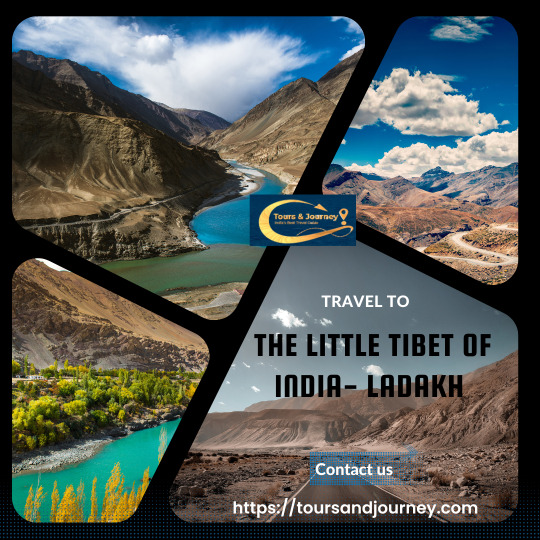
The Little Tibet of India- Ladakh - Tours And Journeys
little Tibet of India ladakh, Pangong Lake, one of the most well-known lakes in India gets its name from the Tibetan term “Pangong Tso,” which translates
#jammu and kashmir trip#jammu and kashmir#Little Tibet ladakh#little Tibet of India#little Tibet of India ladakh#places to visit in jammu and kashmir
0 notes
Text
Notes on a South Asian Tropical Cyrodiil (and more!)
So, many TES fans know that before Oblivion, Cyrodiil was supposed to be tropical. The most striking phrase to describe it, "most is endelss jungle", says it all. The quick and snarky explanation is that Todd Howard watched LOTR, was "inspired" by it, and that's why everything in Oblivion looks sort of like a Rennaisance Fair. In any case, I think it was a huge missed opportunity, especially in a world where most popular fantasy is European inspired, to have replaced what could have been very cool tropical enviroments with what is frankly a lame "Talos used his magic" lore retcon. You can read the 1st edition of the Pocket Guide to the Empire to see what we missed.
But it's not only Cyrodiil which we missed this way… Tamriel just makes more sense as a tropical continent. While the size and the exact location of the continent is discussed by nerdier nerds than me, I think it does make sense like this, and not only that, we have a very interesting world parallel to compare it to: India. From a tropical rainy south to the cold mountains of Skyrim, Tamriel is surprisingly similar to the Indian subcontinent, and many of its geographical quirks can be explained if, instead of assuming a temperate Cyrodiil, we go all out with that concept. This is going to be a long post, you have been warned.
So with that in mind, I'll try to make a not-so brief tour (with some evocative pictures along the way) of a rebuilt tropical Tamriel, following the rains of the moonson:
The position of Tamriel, in this case, would be roughly where the Indian subcontinent is located in real life, that is again, tropical, stretching the Tropic of Cancer (is there a name for the tropics of Nirn? Interesting to think about) Here, we see our numbers pan out well: Tamriel is mentioned to be between 4000 and 3000km across east to west and 2000 and 3000km south to north. VERY, VERY roughly, there is 4000km between Pakistan and Myanmar, and 3000km from Sri Lanka to the northern tip of Tibet. Plot that on a map, and you already can see some coincidences. Now, this is a rather average continent, not Pangea sized like some imagine Tamriel to be. This does help explain why, for example, the interior of Cyrodiil is rainy and good for agriculture instead of a desert. But it also means that it's very likely that Tamriel is ruled by monsoons. Monsoons are complex, but they basically form when there are plenty of warm places for water to evaporate (the South Indian ocean), and mountains that block cool winds from the opposite direction (the Himalayas). We have a very similar situation here, with a mountainous Skyrim on the north of a tropical Cyrodiil facing an equatorial southern ocean. So, what happens are monsoons, perhaps not as strong as IRL India, but carrying rains very deep into the continent. This would feed the rivers and the rich agricultural areas of Cyrodiil, and would have some other consequences.
So let's imagine our trip South to North. In the South, in Black Marsh, Blackwood and Lleyawiin, and Pellentine (southern Elsweyr) we would find, much like in the original lore, humid tropical climates, jungle, wetlands, and my favorite, mangrooves. I would expect mangrooves to stretch in this whole area, across rivers. In fact, one of the reasons why Black Marsh could be so hard to explore and control by the Empires at Cyrodiil would be the presence of thick mangrooves all over its coast. This is the region of Cyrodiil that would most resemble "endless jungle".
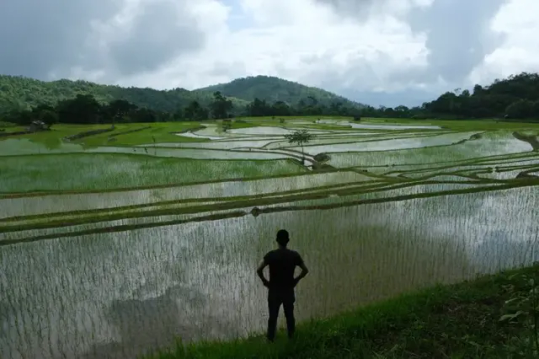
(Rice fields in India, what I imagine most of this Tropical Cyrodiil would look like)
However, as any lore person knows, Anequina, northern Elsweyr, is arid desert. Does this mean a contradiction? Far from it, we have a similar example in IRL India: the Deccan Plateau, which has a semi-arid to arid climate. This can be easily explained by higher elevations up to a small mountain chain separating it from Cyrodiil to the north, and the fact that little rain would reach behind this "Anequina Plateau" would make the region of Kvatch and Anvil more dry much like in canon, in this case, more scrublike. This highland desert would not be as harsh as Elsweyr is usually concieved, maybe, but its driest regions might justify places such as Dune. (On that matter, it always bothered me to read about the "cities" of southern Elsweyr and there being only two or three there. If I had to redesign it, I would move some from the north to the south).

(the Deccan Plateau in India, it gets greener or drier according to the monsoon)
Keeping on our tour of Tamriel, the Topal Bay and the very rainy Black Marsh funnels the rainy monsoon from the south towards central Cyrodiil. Here we find the endless jungle of the Nibenay Valley. But unlike the rainforests of Elsweyr and Black Marsh, these dense forests and rich river plains are mediated by the monsoon winds, with dry seasons alternating with copious rain. This has huge effects on agriculture and culture in general, as agriculture is defined by the rythms of the rain. Keeping with our South Asian theme and the 1st edition of the Guide to the Empire, Cyrodiil would have huge extensions of rice paddies, as well as terrace farming and much hardier crops in the highlands, instead of the… well, almost absent agriculture we saw in Oblivion. The food, clothing, architecture and overall culture of Cyrodiil would be very different with this. The original Pocket Guide said some of its main exports besides rice and fruit are moon sugar and silk. Moon sugar in Cyrodiil, can you believe it?
Another thing I imagine Cyrodiil would be famous for would be fish and seafood, well, river food. Rice plantations can host fishes and crustaceans to get some extra protein, and well, what about mudcrabs? Hell, as preparing muddy soil is vital for rice cultivation, no wonder mudcrabs are considered a nuisance. Imagining critters in gameplay in such an enviroment also makes my mind roam. Tigers, elephants, rhinoceros, and this is not even getting into the more mythical creatures you could find, instead of endless wolves… Rice cultivation is also more labor intensive than other crops, and it also has a deep impact on the terrain, "terraforming" so to say, huge expanses into paddies and terrace farms. This level of cultivation also requires an established infraestructure of irrigation. While this does not necessarily means a centralized goverment, as farmers can build it and maintain it by themselves, the rise of an empire, i.e., the Empire, will also increase the complexity of these systems, adding canals, dams, reservoirs and more ambitious projects, like we see in India and China. I am sure some people more knowledgeable about those cultures can comment more.
While this Cyrodiil is a tropical/subtropical region covered in "endless jungle", some parts might indeed resemble the rolling hills and grasslands you see in Oblivion. Deforesting jungle for pasture is something very common around the world (some have joked this mass deforestation was later in canon explained as a gift from Talos lol) and you can see the results, like in tropical Australia and my closer Mata Atlantica, do superficially resemble temperate pastures in say, Europe. Until you notice the palm trees, of course. But yes, I can see the Nords being a mostly herding people (more on that below) bringing their sheep and cows to the tropical lowlands and, well, deforesting to make space for them.
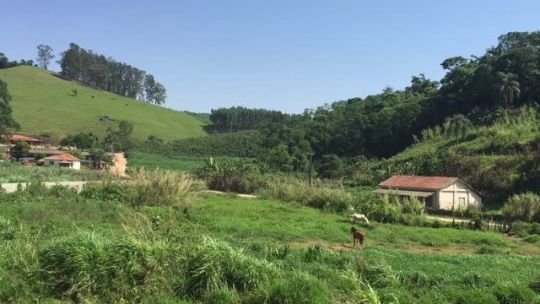
(ranches in Sao Paulo state, Brazil, notice the palm trees)
Imperial City just so happens to be built in an island in the middle of several river crossings, in what seems to be a swampland. The first thing that came to mind when I read that was Tenochtitlán. The districts of Imperial City would have been built over the centuries on artificial islands on a shallow lake, using plentiful mud and organic matter to make fertile chinampas. I believe this would make for a striking sight. Instead of just a city in the middle of a empty island, you would see the White-Gold tower and the rest of Imperial City rising from Lake Rumare, surrounded by rich farmland and its districts joined by walkways. (much like the old descriptions, actually, could you believe I wrote that without reading them?)

(Reconstruction of Tenochtitlán... and I just noticed, it's surrounded by (volcanic) mountains too, much like Imperial City)
Much like the Pantanal is one of the sources to the Paraguay River (which merges with the Paraná and then the Río de la Plata) IRL, here, the swamps of central Cyrodiil would be the source of the Niben. This does raise an interesting question, where is the source of the Niben? Is it Lake Rumare? No, I believe it would be several smaller rivers all the way from Bruma and even Skyrim. These small, violent mountain rivers eventually flow into the Rumare wetlands and only THEN in the placid great Niben. You DON'T want to be caught in one of the mountain valleys in rainy season. This does raise the question; won't the developments upriver, like Imperial City itself and the surrounding farmland, affect the course of the river downwards? There's plenty of water from the rain, but a more developed Cyrodiil might indeed have to grapple with this, supposing, for example, they manage to dam the river.
Looking west, we got the Colovian region, said to be composed of drier highlands and cliffs in the early Pocket Guide. Probably cut from the rain because of the Anequina Plateau, this is indeed more arid or "mediterranean", though I actually see it as more Australian. Maybe some of the drier parts near Hammerfell, resembling Argentine Cuyo and the northwest, would be a distant cry from the wetlands, having thorny dry forests and dry valleys, where yes, you could plant wine. The wetter cloud forests (much like the Yungas in South America, the place where the rain reaches last) could maybe be the home of the last pre-Imperial cultures of Cyrodiil. Fascinating places.

(Jujuy, Argentina. Just *near* are the Yungas cloud forests, where the last rains from the Atlantic meet the Andes, making for some AMAZING places)
Given that I mentioned enviroments near to/on the Andes IRL, let's talk about potatoes. Potatoes are unique crops, because they are the only ones who offer such calories and also be planted in cold enviroments like Europe. Or Skyrim. The discovery and spread of potatoes would cause demographic shifts on people living in cold areas. And they also originated in a unique enivorment IRL: the Andes, actually with possible hybridization from the Magallenic foresWHAT I MEAN, is that potatoes are very important and have been domesticated in very specific conditions. The Wroghtgarian Mountains would seem like a perfect equivalent of the Andes at the first glance, but they would be very different. The Andes, located between the Pacific Ocean and the greater Amazonian region, are very, very unique enviroments. These mountains, however, are in between inner seas. Something like the Atlas or the Alps? In any case, if there is some people who would appreciate hardy tubers that can grow in mountainous places, they are for sure the Orcs, or perhaps the Reachmen. Maybe an hybridization even between them?
This returns me back to Bruma and Skyrim. Some people (who make those excellent Oblivion mods) imagine Bruma with a Tibetan flavor. Personally, I imagine it more like Pakistan or Afghanistan, with lots of mesas and plateaus and valleys. It would look dry and rocky with some very fertile valleys by snowmelt, but it would look like a snowy wonderland on winter, indeed, Pakistan and Afghanistan are very snowy. Eventually, of course, ending up in the great barrier of the Jerall mountains and finally, Skyrim.

(the Alps? Skyrim? No, this is Kashmir on winter!)
In this scenario, Skyrim would be a quite dry place… or would it? There is no need for the Jeralls to be a straight line of peaks like the Himalayas. They could be a more "broken" series of mountains, like the southern Andes, but in any case, the rain from the south would clash into the higher mountains. Indeed, that is what actually happens in the Himalayas, the foothills of the Himalayas are some of the rainest places IN THE WORLD. These small valleys are something very unique and not very well known part of the world IRL. I can imagine the Skyrim equivalent would be as unique too, hard to navigate and live in. The forests of the Rift and Falkreath would be mazes of windy forests valleys, each with their own unique secrets under a perpetual fog and drizzle. This is a very interesting enviroment to imagine, where again, some of the older cultures of Tamriel could still live.
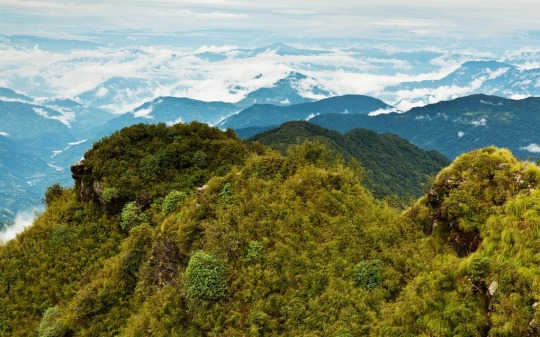
(forests of Bhutan, note how the humid valleys stretch into the distance before the cold Himalayas begin)
However, what does Skyrim look like once you cross the border with Ralof? I imagine some sort of more fertile Tibet, not as high as the Tibetan plateau, allowing for forest and alpine tundra. This is mostly because, while Skyrim is high up, I don't imagine as a plateau, but rather a series of broken mountains like the North American Rockies, which makes sense when you account for all the volcanic activity (there is another super-volcano down in Skyrim but nobody notices). I imagine that Skyrim would be a primarily herding pastoral land before the introduction of hardier crops such as potatoes, and even then. Nord culture would be very interesting reimagined like this; hillforts guarding herds of sheep and cows. It would also create a clash between the very, very agrarian south and the nomadic herding north, with High Rock and Hammerfell a gradient between the two.
I decide I will stop here, I haven't even touched Valenwood (though its subtropical forest seems rather coherent to me), High Rock (the most boring part of Tamriel IMO), Hammerfell, Summerset Islands (if you don't have tropical elves in your setting, you're a coward), or whatever the hell is going on Morrowind. But I hope you enjoyed this worldbuilding exercise and how to make sense of Tamriel's crazy geography. Next time, I'll try to play with tectonics and see if we can make it even more interesting.
But here we enter a problem; if we are operating on a level where Cyrodiil is roughly at the same latitude of India, wouldn't that make Skyrim too far from the poles to allow its tundra like climate, even with elevation? No doubt. Tibet is only as cold as it is because it's the roof of the world and far from any ocean. The northernmost tip Skyrim, like Tibet, would be at the latitude of Turkey, Korea or California, which can get quite cold, but not to the level of what we see on Winterhold or Dawnstar (Solitude sounds familiar, though). What's more, having an ocean up north would only moderate the temperature. Cool currents often don't bring cold per-se, just decrease rainfall. This would end with a very temperate and pleasant Skyrim instead of tundra. Which is on its own, interesting to explore.
Could Nirn be going through an ice age, like it's implied with the dissapearance of Atmora? Possibly, but it would imply revising everything I said before, as ice ages decrease rainfall and mess up with weather patterns all over the world. A colder Nirn would explain a lot, though.
If you liked what you read and would like more worldbuilding, consider tipping me on Ko-Fi and send me stuff to talk about, or just send an ask! I'm the kind of guy who reads encyclopedias and RPG manuals for fun, so I have plenty to talk about about everything from fantasy to science fiction to speculative evolution and alternate history!
#worldbuilding#tes#elder scrolls#skyrim#oblivion#the 'do more tropical worldbuilding you eurocentric cowards' agenda#fantasy#cosas mias
239 notes
·
View notes
Text
Stone Turtle of Karakorum, Mongolia, c. 1235-1260 CE: this statue is one of the only surviving features of Karakorum, which was once the capital city of the Mongol Empire
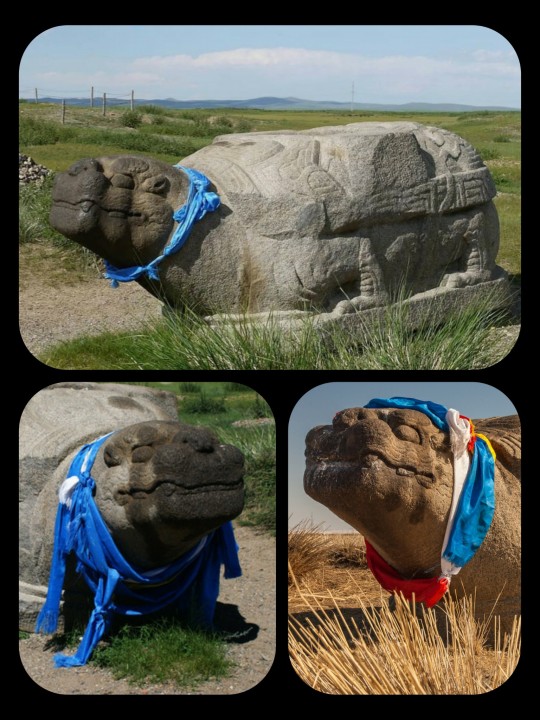
The statue is decorated with a ceremonial scarf known as a khadag (or khata), which is part of a Buddhist custom that is also found in Tibet, Nepal, and Bhutan. The scarves are often left atop shrines and sacred artifacts as a way to express respect and/or reverence. In Mongolia, this tradition also contains elements of Tengrism/shamanism.
The city of Karakorum was originally established by Genghis Khan in 1220 CE, when it was used as a base for the Mongol invasion of China. It then became the capital of the Mongol Empire in 1235 CE, and quickly developed into a thriving center for trade/cultural exchange between the Eastern and Western worlds.
The city attracted merchants of many different nationalities and faiths, and Medieval sources note that the city displayed an unusual degree of diversity and religious tolerance. It contained 12 different temples devoted to pagan and/or shamanistic traditions, two mosques, one church, and at least one Buddhist temple.
As this article explains:
The city might have been compact, but it was cosmopolitan, with residents including Mongols, Steppe tribes, Han Chinese, Persians, Armenians, and captives from Europe who included a master goldsmith from Paris named William Buchier, a woman from Metz, one Paquette, and an Englishman known only as Basil. There were, too, scribes and translators from diverse Asian nations to work in the bureaucracy, and official representatives from various foreign courts such as the Sultanates of Rum and India.
This diversity was reflected in the various religions practised there and, in time, the construction of many fine stone buildings by followers of Taoism, Buddhism, Islam, and Christianity.
The prosperous days of Karakorum were very short-lived, however. The Mongol capital was moved to Xanadu in 1263, and then to Khanbaliq (modern-day Beijing) in 1267, under the leadership of Kublai Khan; Karakorum lost most of its power, authority, and leadership in the process. Without the resources and support that it had previously received from the leaders of the Mongol Empire, the city was left in a very vulnerable position. The residents of Karakorum began leaving the site in large numbers, until the city had eventually become almost entirely abandoned.
There were a few scattered attempts to revive the city in the years that followed, but any hope of restoring Karakorum to its former glory was then finally shattered in 1380, when the entire city was razed to the ground by Ming Dynasty troops.
The Erdene Zuu Monastery was later built near the site where Karakorum once stood, and pieces of the ruins were taken to be used as building materials during the construction of the monastery. The Erdene Zuu Monastery is also believed to be the oldest surviving Buddhist monastery in Mongolia.
There is very little left of the ruined city today, and this statue is one of the few remaining features that can still be seen at the site. It originally formed the base of an inscribed stele, but the pillar section was somehow lost/destroyed, leaving nothing but the base (which may be a depiction of the mythological dragon-turtle, Bixi, from Chinese mythology).
This statue and the site in general always kinda remind me of the Ozymandias poem (the version by Horace Smith, not the one by Percy Bysshe Shelley):
In Egypt's sandy silence, all alone,
stands a gigantic leg
which far off throws the only shadow
that the desert knows.
"I am great OZYMANDIAS," saith the stone,
"the King of Kings; this mighty city shows
the wonders of my hand."
The city's gone —
naught but the leg remaining
to disclose the site
of this forgotten Babylon.
We wonder —
and some Hunter may express wonder like ours,
when thro' the wilderness where London stood,
holding the wolf in chace,
he meets some fragment huge
and stops to guess
what powerful but unrecorded race
once dwelt in that annihilated place
Sources & More Info:
University of Washington: Karakorum, Capital of the Mongol Empire
Encyclopedia Britannica: Entry for Karakorum
World History: Karakorum
#archaeology#history#anthropology#artifact#ancient history#mongol empire#mongolia#karakorum#middle ages#ancient ruins#art#turtle#bixi#ozymandias#poetry#mythology#genghis khan
152 notes
·
View notes
Note
As a Social Democrat, what would you say has been its historical tendencies towards colonialism and upliftment of developing nations? Why is that Communism, despite some acknowledged failures (Afghanistan, Tibet, Xinjiang), is seen as more anti-colonialist by comparison?
That's a really interesting question.
Honestly, when it comes to social democracy's record on de-colonization, it's something of a mixed bag. One of Eduard Bernstein's major flaws, his feet of clay, is that he was pro-imperialism - although to be fair, the SPD as a whole was pretty consistently anti-colonialist between the 1890s and 1914.
On the other hand, the British Labour Party did very little about empire and was arguably pro-empire up until 1945. Clement Attlee, however, had a personal interest in decolonization and was a committed supporter of Indian self-governance since the 1930s, and negotiated the independence of India, Pakistan, Myanmar, and Sri Lanka. On the other hand, Attlee wasn't entirely consistent on this point - he rather mis-handled the British Mandate in Palestine, African colonies were bypassed for de-colonization, and the Attlee government began the counter-insurgency in Malaysia. So something of a mixed bag, as I said.
Attlee's policies did have a long-term effect on the Labour Party - it opposed British involvement in the Suez Crisis on a united basis despite its divisions on other issues, for example. Likewise, the Harold Wilson government was characterized by broad sympathies to the cause of decolonization but a relatively weak commitment to accepting much risk. For example, Wilson refused to send British ground troops to Vietnam but did provide intelligence and jungle warfare training and wouldn't publicly denounce the war.
He did remove British troops from Singapore, Malaysia, and the Persian Gulf and supported de-colonization in Africa, but he rather screwed up in Rhodesia where after insisting on black suffrage in return for Rhodesian independence, he refused to send the British military to "fight our kith and kin" when Ian Smith unilaterally declared independence for his apartheid state, delaying liberation for many years.
By contrast, the Soviet Union and China could more straightforwardly support anti-colonial insurgencies (that often blended nationalist and communist ideologies) in no small part because the Bolsheviks had been anti-WWI and anti-imperialism pretty consistently thanks to Lenin's influence.
And if you were an anti-colonial insurgency, would you prefer the folks who might give you a thumbs up or the folks who would give you weapons?
102 notes
·
View notes
Text
Saint Seiya Lance's Role - Chapter 85 is out!
This chapter has been betaread by @zebulonwallace
Links:
Fanfiction.net
Archive of our Own
Summary:
It is the start of Atlae's 3rd year in Shamballa's Rozan Martial Arts Turtle School and the Winter festival to celebrate Lord Genbu has begun. Ambitious and optimistic about his dream to become the world's best at "beating people up" as the day he first arrived on Tibet, Atlae proves all of Master Yuzuriha's faith in him correct this day and earns his final belt from the school. Little does he realise, however, that the shockwaves of his achievement echo beyond merely realising Master Yuzuriha's dream of one-upping Shion and Dohko as the superior Master among the three.
Afterwards, with the patronage of his adoptive guardian Arthur Solo, Atlae makes his way out of the Himalayas, down India and Sri Lanka, to the Chrysaor, a mariner boat docked in Trincomalee. The sailing school vessel is about to make it's yearly circumnavigation trip and Atlae wishes to participate, not only to learn how to sail, but also to reacquaint himself with the culture of the Mariners who raised him. Upon arriving, he discovers that the Chrysaor's crew has a member very familiar to him.

21 notes
·
View notes
Text






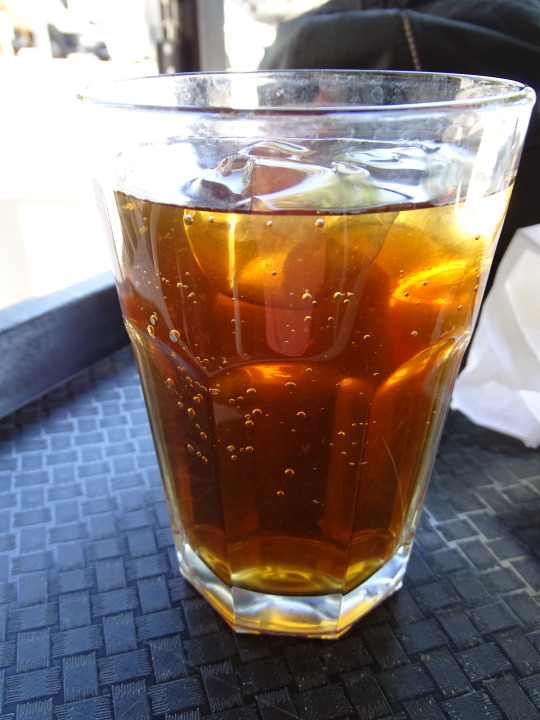




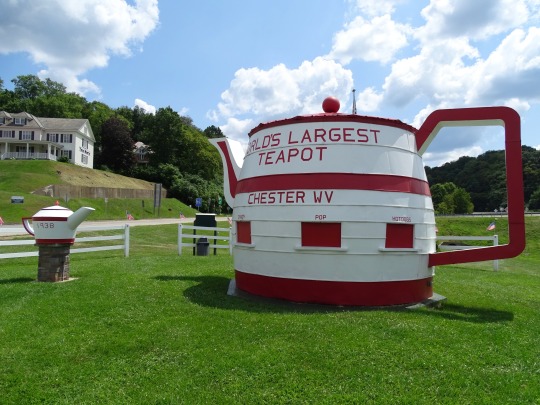








National Tea Day
Just because we dumped all that tea in the harbor, doesn’t mean we don’t enjoy the relaxing, warm drink. Visit a Fest-Tea-Val, or simply enjoy a steaming mug of tea.
That’s about the perfect sentiment we can think of for a nice cup of tea! Tea is a wonderful drink that comes in a wide variety of different flavors, each of them having a distinct personality and character. It has been used for everything from a simple morning libation to the central element of certain social and religious rituals.
This amazing drink is so important that taxing it was the final straw that ignited a fledgling country to declare a revolution! National Tea Day celebrates this fantastic beverage and the seemingly endless list of things it can do.
History of National Tea Day
The History of National Tea Day reaches far back into the world’s history but can be narrowed down to a place of origin that is surprisingly precise.
This place sits at the intersection of Latitude 29N and Longitude 98E, notable as the joining of NE India, Burma, China, and Tibet. Many mythological origins for tea also exist as well, some of them merely interesting and others quite gruesome.
In one period in China, the Emperor had ordered that all people of his nation would boil their water before drinking it. So it came to pass that the Emperor was sitting and drinking a simple cup of boiled water when leaves from a nearby tree blew into it, creating the first tea.
In another tale, a man sat meditating in front of a wall (for 9 whole years!) when he accidentally fell asleep. On waking, he was so disgusted with his inability to stay awake, which he considered to be a weakness, that he severed his eyelids and threw them to the ground where they sprouted into the first tea bushes. A little disturbing, perhaps, but utterly Asian in its style.
Regardless of its origins (which may be in dispute) the importance of tea cannot be understated. And anyone is strongly encouraged to research it since it would be impossible to cover it’s entire history here.
Now, it’s time to take a look at what tea is–and what it is not. Officially speaking tea is an infusion of the leaves of Camellia Sinensis, an unassuming evergreen plant that hails from Asia. Technically, what tea is not is anything that does not contain these leaves.
That means that, while infusions of herbs not containing these leaves may be referred to as ‘Herbal Teas’, they are not in fact teas at all. Only those infusions which contain the Camellia Sinensis leaves can properly be called tea. Considering tea is the second most consumed beverage in the world, second only to water, it seems that a little accuracy is in order.
On the other hand, as words and traditions evolve, many things have become known as tea, which so many people around the world enjoy, that it doesn’t hurt to be a little generous with the definition. And generosity is what National Tea Day is all about. Drinking, and sharing, a generous cup of tea.
Because it spans a variety of sources and cultures, a couple of different dates have been recognized as National Tea Day. April 21 is National Tea Day in the UK. The UN has put National Tea Day a month later, and another National Tea Day falls in the middle of December. There are even days for Iced Tea, Bubble Tea and Chai. Not to mention a whole month for Earl Grey Tea and Iced Tea.
It seems that celebrating Tea is a festivity that should be happening all throughout the year! And since tea is the most consumed drink in the world (after water) no one is even going to complain.
How to Celebrate National Tea Day
Drink a Cup (or Glass or Mug) of Tea
Literally hundreds of varieties of tea are in existence, from those that are gently dried and cured to those that go through complex processes that can include long stays in caves. So many varieties of tea exist that it almost defies the imagination! National Tea Day is the perfect time to try a few new ones.
Grab a Glass of Iced Tea
In some countries, tea is only considered to be authentic if it is enjoyed hot. However, other cultures have taken the idea of tea and turned it into a cold beverage. For instance, in the United States, iced tea is a common beverage that is served in a large, tall glass. It is often sold by the gallon in stores and, in the south (but almost never in the north!), it is made very sweet.
Whatever the case, the first order of business for National Tea Day is sitting down to enjoy a sip in whatever form is preferred.
Attend the Fest-Tea-Val in UK
Celebrated all throughout the United Kingdom, Fest-Tea-Val (festival!) Tea rooms, hotels, cafes and pubs all around the nation host special events, promotions and activities that are centered around the country’s favorite drink: tea. These events are often paired with worthy charities in order to provide financial support for them.
Host a Fest-Tea-Val
Those outside of the UK certainly don’t need to be excluded from all of the fun! Consider hosting a National Tea Day celebration at home, at work, or in the community. Simply gather friends or coworkers together and put on a spread of different varieties of tea that can be tried. This would also be a great time to call that friend who has the eclectic collection of teapots!
Take the Sustainable Tea Challenge
Since most tea bags are made of plastic, which isn’t great for the earth, many people are moving in the direction of using loose leaf tea or at least compostable tea bags. Some companies try to promote sustainability and eco-friendliness in the production of their tea, including:
Numi. Fair-trade, organic, and offsetting carbon emissions.
Yogi. Organic, recyclable/compostable packaging and gives back.
Pukka. Organic and donates profits to help the planet.
Source
#Earl Grey#Earl Grey Tea is my favorite tea#tea Earl Grey hot#lavender tea#Peach Green Tea#Peach Citrus Green Tea#Pineapple Black Tea#travel#always unsweetened#Tropical Ice Tea#tea mug#tea pot#drinking#USA#National Tea Day#NationalTeaDay#restaurant#lounge#vacation#original photography#Purple Haze Lavender Farm#21 April#Capilé#Portugal#Canada#Women are Persons By Barbara Patterson#Ottawa#World's Largest Teapot#Chester
3 notes
·
View notes
Text
Kill the crown: Heng the baboon intro post.
Beware, long infodump cuz I cannot help myself-
The very first celestial primate, Heng is old. No one knows how old the baboon is, not even himself.
He can remember the first human village he wandered to, the years he spent watching the humans farm and sew and pray and so many other things. He can remember the night the village was raided, burned to the ground. He can remember killing the raiders’ leader, turning him to dust with his bare hands by draining his qi— healing the gaping wound in his chest from the spear.
A fruitless effort trying to kill a stone monkey with mortal weapons.
The few survivors of that small village were terrified of him, rightfully so. He was cast out from the only home he knew, and left to wander.
He went all over, gaining knowledge of different cultures, human speech, clothes, all sorts of things as he enjoyed his explorations. Soon enough he could tell exactly how any human society would work; from India to Tibet he saw it all, and knew it all. But he was far from omniscient, and he wanted to know more about this world. The chaos and wonder all around him, how it constantly changed and how it could possibly be filled with suffering.
During his travels, he had found a demon only kingdom in the east of China dubbed “ The Eastern Kingdom of the Sun”. Ruled by the newly crowned emperor Huang Bojing and his wife… a gibbon.
During his stay, he asked about the two rulers and got the story of how they became betrothed.
How with only the palm of her hand, the gibbon Min-Yáng had beaten the former emperor in hand to hand combat— launching him out of the ring with one hit.
Heng knew the whispers of a third monkey had to be true! He had met the second monkey only once, when they crossed paths a continent over.
The strange macaque claimed to be “ the handsome monkey king”, wearing palm leaves with flowers woven into a shoddy crown, and barely modest clothing made of more woven plants.
He… just nodded along, saying he’d wish the king luck before walking away. He didn’t even know where to find immortality like the strange king asked… especially when he didn’t need such things with how he could reverse his own age.
But this, this could be different! He could cultivate a relationship with this stone ape, perhaps— even becoming her friend.
And that’s what he did.
Meeting her in person was breathtaking, both of them knowing deep down— they were the same.
They weren’t born of flesh and blood, instead of stone and spirit. They weren’t blood siblings or anything close, but that didn’t stop them from bonding like such.
Heng became a part of the royal family only months later, finally settling down within the demonic kingdom.
He had traded in days of walking for learning to read and write, slim meals after hard work for feasts every night with his new sworn-sister and her husband, and rags for silks and cotton soft to the touch.
He was home. He had a family.
He didn’t stay in the palace. Despite the luxury his sister and brother-in-law offered, he couldn’t stay in one place for long. So he went into the city, buying a home there. He didn’t stick with one job either, happy to pick up work from the butcher, or the textile shop, even the farmers.
When he became an uncle, Heng wept. Tears of joy flooded from his eyes the moment he held that little baby; looking down at a little face with a yellow face marking just like her mother’s.
Her eyes were red like Bojing’s, irises blue like her mother’s. Zhi, the first born.
Then four years later, a second child. A second girl, a copy of her mother. Ming-Yue.
Another four years later, Heng couldn’t stop his laughter when a third girl was born. Just like her father, Jiayi was brought into the world.
And finally, three years later- the last child was born. A boy, Li. Orange skin with black hair much like the patch his mother and two sisters had.
It was a wonderful life, even if the Veiled emperor threatened the kingdom from afar- like a storm brewing on the horizon. How could the celestial realm ever hurt his family? They weren’t normal demons or mortals.
Those clouds grew closer, darker, thunderous.
Kingdoms around fell to the tirade, but others stayed strong. Heng made sure the children knew to not disturb their parents when the war-room doors were closed, guiding them away to do other activities. The four children grew up with war always on the horizon, and yet it was a far from thought.
At least until Zhi reached the age to be brought into the war room to learn strategies, to learn how serious a celestial platoon could be against a demonic army.
It was up to Heng to keep the other three busy, occupied with other tasks such as learning to cook, reading, or exploring the capital city.
He kept calm, always keeping a good attitude so no one would worry.
But when the Great Sage’s weapon was discovered in a newly claimed territory… Heng took the task of retrieving it. It had been fifty years since the great journey of the Tang monk, and fifty years since any of them were heard from. The staff reappearing, it had to mean something.
They had to get to it before the Veiled Emperor did.
So a caravan was assembled; wagons loaded, horses saddled, and soldiers armed just in case. Heng bid his family a farewell, just for a few days. After all these were only retrieving a staff, it shouldn’t take long.
He didn’t think to double check the wagons for stowaways.
He didn’t think Yue would ever sneak into one, knowing she shouldn’t have ever been so far from the safety of home. He never thought he’d have to watch as she pulled the staff from the ground, as the clouds above them rumbled like a hurricane about to form.
———
Whew! A lot of text there huh? Now for pictures! The one down below will be his main outfit and hairstyle!

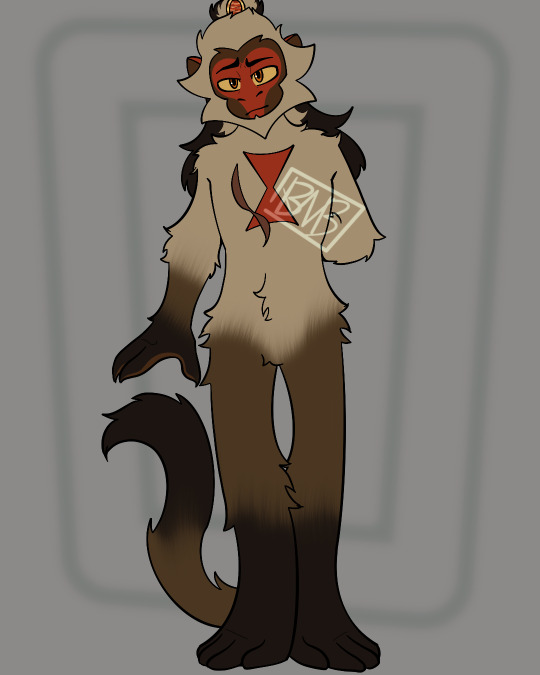

#jttw monkey king#jttw#jttw au#journey to the west#jttw sun wukong#jttw fanart#journey to the west monkey king#kill the crown#monkey king#six eared macaque#sun wukong#writing post#my ocs#original character
3 notes
·
View notes
Note
Hi there! I’ve noticed you a lot around Aph Mongolia posts, so I wanted to ask you some questions! First, as a foreigner, what you made you so interested in this character? Second, could you go into who you ship him with and why? It’s nice to see people still actively talking about my boy, so I was hoping to engage a bit!
Hi! :D Thank you for the ask! Well, I guess I've been interested in Mongolian culture/history for a few years now, it first peaked my interest when I was around 13? So its been 6, almost 7 years of being obsessed haha. I really love reading and learning about Mongolian history and culture, I even really like Mongolian music too and listen to it along with all of my other songs on my playlist! I first got into hetalia when I was 12, and so my love for hetalia and love for Mongolia kind of collided and well here I am all these years later still posting about it lol!
Over the years my hcs of Mongolia as a character has changed as I've read more about Mongolian history/culture but also influenced from what other people post about him so there are things from old accounts I may have posted in the past which I don't agree with now but. I honestly think Mongolia as a character would be so damn interesting? Considering his past and current way of living, and how he got to where he is now. Like there's so much history there to work with, not even just when he had an empire, but before that and after that too. Even who his predecessors could have been/were is so interesting to me. He himself really influenced a lot of other nations histories also. His relationships, with other nations too is so interesting to think about!!
Ships, some are a lot more wholesome than others:
Tibet x Mongolia - YES DHSJD LOVE THEM thank you @flyingsassysaddles so wholesome 😭
India x Mongolia - @flyingsassysaddles made a really good post about that ship and the history between the two which got me into it!
Turkey x Mongolia - umm old history and they just seem really fun together tbh!
Japan x Mongolia - I think the history between them is kind of funny tbh 😭 plus nowadays both countries are on good terms with each other! Both have similar kind of interests, with Japans national sport being Sumo and Mongolias is bukh, also I think Mongolians dominating Sumo is hilarious I'm sorry. I have a bit of a raunchy reason for shipping them too but I'm not sure of what your age is so I'm not sure if I should answer that for you!
Vietnam x Mongolia - lol she beat his ass 😍 I think he kind of respects her for that tho. but I think this would be a power couple tbh like I can see them both just standing next to each other with resting bitch faces 😭
Ok this one is controversial asf LMAO its China x Mongolia ☠️ I don't personally see it as a healthy "ship" though like. At its best I like imagining them as two old men bickering with each other but like unlike the other ships which have a lot of potential to be healthy this one, no not really when you look at the history and current politics. I mean you're Mongolian of course you know this haha. I'm a little hesitant to put out Monchu content for this reason even tho like. I recently wrote a one-shot lol. For me when I'm being serious about the ship and not viewing it in the usual light-hearted hetalia lense, it would be like a tragic/complicated/unhealthy/emotionally taxing/toxic "relationship". I have a post planned in which I try to explain it but I'm very hesitant to even post it.
This one seems so random hahaha but Philippines x Mongolia because I was curious and looked up Philippines-Mongolia relations and like. It was quite short but there was a small painting of a Mongolian couple who visited the Philippines in the 17th century in there? And they were in furs and all and considering the heat and humidity of the Philippines 😨 So I find it funny just. Thinking about him going there on a whim or something because screw it why not and being unprepared for the humidity and aph Philippines being like bro what is wrong with you 😭 Also I think him calling aph Mongolia Mango-lia is cute jdsjdjaj. This is more of a fun, random one.
I have some poly ships with him too but idk they're not too fleshed out :> Thank you sm for the ask tho I love reading your insight on things!
#hetalia#aph mongolia#hws mongolia#hetalia world twinkle#Hetalia world stars#Hetalia world series#Aph Tibet#Hws Tibet#Aph india#Hws india#Aph turkey#Hws turkey#Aph japan#Hws japan#Aph Vietnam#Hws Vietnam#Aph china#Hws China#aph philippines#hws philippines#Mongolmaral
46 notes
·
View notes
Text
Mysterious Times(AKA JAMIES BOOK FROM ROTG)CH 2 YETIS!!!
YETI!(This is meant as Edutainment so you can enjoy and learn)
The Yeti is an ape-like creature. They are taller than an average man. It can walk like a man and has long white or brown hairs covering its whole body.
Colors vary between sightings; sometimes they're snowy white to match the camouflage of the Himalayas.And sometimes in different colors: reddish brown, bluish gray, cream, coffee, light gray, white and light brown.
They are found in the Himalayas. Inhabiting Nepal,Tibet and Russia and India, the Yetis according to modern sightings are said to stand from 8 to 10.5 feet tall, have a furry coat of brown, reddish or black hair and to resemble a huge, upright walking ape.Several expeditions have taken place to find the Yetis, however, only footprints, bones, and hair samples have been discovered-
The "Yeti" or "Abominable Snowman" is a variety found high in the Himalayan Mountains(round Shangri-La), commonly depicted with white fur in fiction.
The Yeti was even mentioned in pre-Buddhist cultures, such as the Lecha people, who worshiped a "Glacier Giant." Tibetan and Nepalese monasteries have collected several skulls and bones of the yetis, some of which reside in the Smithsonian Museum today. Although one of their specimens was proven to be a human bone, others stored in the museum are still in question.
In Buddhist mythology, the Yetis were peaceful creatures that were very shy, and lived in dense snow caves on the glaciers which form the Ganges River in India some legends even state that they had their own tribes and chiefs. In modern times, most sightings and evidence are on K2. The name Yeti derives from "Yeh-Tah", meaning "rock thing".
Around the time of the 16th century the number of yeti sightings and alleged meetings significantly decreased,why did this happen?Skeptics say because people stopped making so many fairy tales…however according to legend they were hunted and feared by many locals and so some went into hiding deep into the himalayas whilst another legend states they were taken under the protective wing of a cossack warrior and left to whereabouts unknown….
Tibetan
Michê : translates as "man-berar”
Dzu-teh – 'dzu' translates as "cattle" and the full meaning translates as "cattle bear",
Migoi or Mi-go translates as "wild man".
Nepalian
Bun Manchi – Nepali for "jungle man" that is used outside Sherpa communities where yeti is the common name.
Mirka – Another name for "wild-man". Local legend holds that "anyone who sees one dies or is killed". The latter is taken from a written statement by Frank Smythe's sherpas in 1937.
Kang Admi – "Snow Man".
Jungli Admi – "Wild Man".
Xueren Chinese: 雪人 - "Snow Man"
Fun Fact!
The name Abominable Snowman was coined in 1921, the year Lieutenant-Colonel Charles Howar-Bury led a reconnaissance mission which he chronicled in Mount Everest The Reconnaissance, 1921. In the book, Howard-Bury includes an account of crossing the Lhagpa La at 21,000 ft (6,400 m) where he found footprints that he believed "were probably caused by a large 'loping' grey wolf, which in the soft snow formed double tracks rather like those of a bare-footed man". He adds that his Sherpa guides "at once volunteered that the tracks must be that of 'The Wild Man of the Snows', to which they gave the name 'metoh-kangmi'".. "Metoh" translates as "man-bear" and "kang-mi" translates as "snowman".
--------------------------------------------------
Now i invite you to a journey to a land which boundaries are that of imagination!A story.....that you will not believe! Little does anyone know that a threat IS COMING!!!! Pitch while powerfull and dangerous....this....is far worse! There is far more at stake then just belief! (It was alluded to in certain offical rotg content) And will have some details about the past.
Find out on MARCH 27TH!!! WHO WILL SAVE US????? And what is this giant threat that will imperil everyone?
2 notes
·
View notes
Text
An Exiled Publisher Creates a ‘Brotherhood Across Tibetans’
Bhuchung Sonam co-founded a press to nurture the writing of Tibetans, helping provide through literature a sense of home for a stateless population.

by Tenzin D. Tsagong
In the winter of 1982, Bhuchung Sonam left his home in Central Tibet. For five days, he trekked with his father across the Himalayas to the Nepali border. Only around 11 years old then, he knew little about what they were fleeing — China’s decades-long colonization of his homeland — and why. He also didn’t realize that he would never again see his homeland, his mother or his six siblings.
After arriving in Nepal, Sonam and his father made a pilgrimage to Buddhist sites in neighboring India, the home of the Dalai Lama and of many other Tibetans in exile. Without offering much explanation, the father then returned to Tibet, leaving Sonam under the care of a family friend.
Sonam never again saw his father, who died when he was in the 11th grade. He last spoke to his mother nine years ago. During the short call, she promised, “We will meet one more time.” But by then, Sonam knew that the political situation in Tibet made that nearly impossible.
Left in a foreign country without kin, he said, everything was new: bananas, dal, the notorious Indian monsoon. Writing and literature became a salve to help survive the loss of his homeland and his family. “The writing seals the pain,” he said. “It’s a process of negotiating this really harsh and endless barrage of obstacles and challenges that exile throws at you.”
READ MORE
#tibet#book publishing#dalai lama#homeland#librarians#writing#TibetWrites#literature#national identity
7 notes
·
View notes
Text
Summer:
Trek in tibet..
Eat momos at sunset on a rooftop in kathmandu. Read soul mountain by gao xingjian.
buy fake engagement rings with my bestie in India so that a) i will not look like a target b) he will convince his family he is straight and with a nice australian girl c) we will treasure this as hilarious travel mementos
Find a home for my chickens
Start documenting my grandmothers recipes
Buy little ribbons and fabric scraps in every city I visit and pin them to my backpack (like a map!)
Wear dark lipstick all the time (I love how it matches my hair and eyes!)
get a payrise
figure out a way to disable my smoke alarm (incense)
Buy a dress in Varanasi
Find a side hustle (open to suggestions)
Haunt my friends’ sharehouse
Find my family in WA
Live, laugh, AND love
23 notes
·
View notes
Text
The Little Tibet of India - Ladakh: A Journey Through the Mystical Land
Introduction:
Nestled amidst the towering peaks of the Himalayas, Ladakh, often referred to as the "Little Tibet of India," is a captivating destination that beckons adventurers and spiritual seekers alike. In the northernmost region of the union territory of Jammu and Kashmir, Ladakh's unique cultural blend, breathtaking landscapes, and ancient monasteries make it a must-visit for those seeking an offbeat travel experience.

Ladakh: A Glimpse into the Little Tibet of India
Discovering Ladakh's Cultural Tapestry:
Ladakh, with its rich cultural heritage, draws parallels to Tibet, earning it the moniker "Little Tibet." The region is home to a mix of Tibetan and Indian influences, reflected in its architecture, cuisine, and festivals. Visitors can explore ancient monasteries like Thiksey, Hemis, and Diskit, which stand as testaments to Ladakh's spiritual legacy.
The Enchanting Landscape:
Ladakh's surreal beauty lies in its stark landscapes, where barren mountains meet azure skies and pristine lakes reflect the splendor of the surroundings. Pangong Lake, situated at an altitude of over 14,000 feet, is a mesmerizing spectacle that has gained international fame, thanks to its appearance in Bollywood blockbusters.
Journey through Jammu and Kashmir:
To reach Ladakh, many embark on a thrilling road trip through the picturesque region of Jammu and Kashmir. The journey itself is an adventure, with winding roads, charming villages, and the ever-present scent of pine in the air. Srinagar, the summer capital of Jammu and Kashmir, serves as a gateway to the ethereal beauty that lies further north.
Tours and Journeys: Your Gateway to Little Tibet
Crafting Unforgettable Experiences:
Tours and Journeys, a leading travel agency, specializes in curating bespoke journeys to Ladakh, ensuring that every traveler's experience is unique and unforgettable. From cultural immersions in ancient monasteries to thrilling excursions across high mountain passes, their itineraries are designed to showcase the best of Ladakh.
Expert Guides and Local Insights:
One of the key features of Tours and Journeys is their team of experienced guides who provide invaluable insights into Ladakh's culture and history. These guides, often locals, add a personal touch to the journey, offering a deeper understanding of the Little Tibet's traditions and way of life.
Responsible Travel:
Tours and Journeys take pride in promoting responsible and sustainable tourism. By partnering with local communities, they ensure that the benefits of tourism reach the grassroots level. Travelers can engage in eco-friendly practices, contributing to the preservation of Ladakh's pristine environment.
Conclusion: Embracing the Spirit of Ladakh
In conclusion, Ladakh, the Little Tibet of India, is not just a destination; it's an experience that transcends the ordinary. With its unique blend of culture, spirituality, and awe-inspiring landscapes, Ladakh captures the hearts of those who venture into its mystical realms. Tours and Journeys provide the perfect avenue to explore this enchanting land, ensuring that every journey is a testament to the spirit of Little Tibet. Plan your Ladakh adventure with Tours and Journeys for a travel experience that goes beyond the ordinary. For more details and to book your Little Tibet adventure, visit Tours and Journeys.
#Little Tibet ladakh#little Tibet of India#jammu and kashmir#little Tibet of India ladakh#places to visit in jammu and kashmir
0 notes
Text
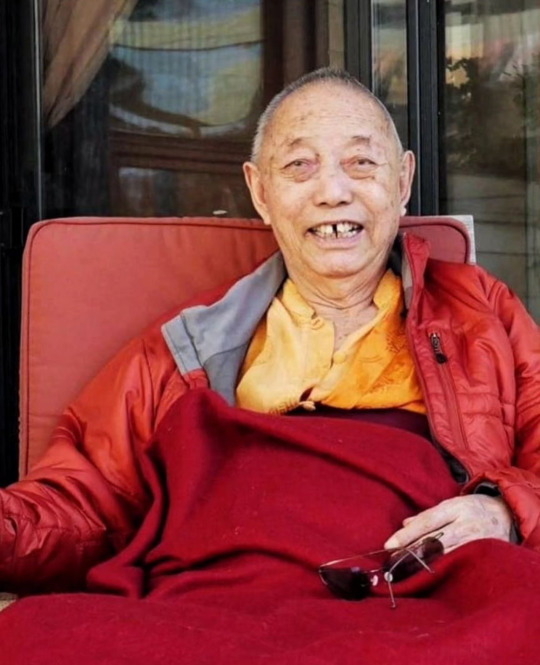
When I was a little boy, I used to lie to my own spiritual mentors. I would fib to them and make up if they were admiring everything I was saying. I would feel what was going on. They were just leading me on.
Later on in India, there were great lamas with whom I had contact, including His Holiness Karmapa, His Holiness the Dalai Lama, His Holiness Dudjom Rinpoche, and so on. saving on
When speaking to such lamas then, even if they are saying, "Oh yes, oh yes," as if they're agreeing with us and accepting everything we're saying, if we are lying, this simply leads to our own disgrace.
From their perspective, what they're seeing is that all composite phenomena are impermanent. They are viewing the world in light of the ten analogies of the world being like an illusion, like a reflection in a mirror, and so on. Some of these lamas are actual masters of Atiyoga and are living the experience of the Great Perfection.
The point of all this is that, if one tries to deceive others, it really is only one's own loss. In India and Tibet there were a lot of people who lied to the great lamas. A lot of aristocrats would go to His Holiness the Dalai Lama and tell all kinds of stories; and they would think they had succeeded. However, all they really succeeded in doing was to bring disgrace upon their own heads.
Be careful about how you speak. It's important not to deceive. On the other hand, you don't have to be so honest you run off at the mouth or heard telling everything you’ve seen or heard and so forth You dont need to do that either. Sometimes you can just be quiet.
~ Gyatrul Rinpoche in, Natural Liberation:
2 notes
·
View notes
Note
*harass harass* Tell me about the buddhism books you've been reading caelummmmm. Tell me how they intersect with ATLA and your thoughts on EBWF
*sweats*
So the more I read about Eastern Philosophy, the more I realize I'll probably never fully grasp it, lol. Ironically I think Buddhism's answer to this realization is "Yes, that's the POINT."
I'll be honest - I'm not reading anything overly academic or deep. I needed to get in on the ground level of understanding, so I literally read through Buddhism for Dummies, Taoism for Dummies, and Hinduism for Dummies. All three were very interesting and informative!
For me, trying to understand Buddhism is kinda like trying to hold smoke, my hands are in it but I can't seem to grasp it. I feel like I get it when I'm reading about it but once I put the book down the concept just eludes me. (If anyone's got any reading suggestions for understanding Buddhist philosophy, feel free to rec them to me!)
One thing that stuck out to me, though - the Three Jewels. The Three Jewels (Buddha, Dharma, and Sangha, or the teacher, his teachings, and the spiritual community) are a pretty important part of Buddhism, which means they ought to be a pretty important part of Air Nomad culture as well. I'm guessing there should be some sort of Buddha-like enlightened teacher figure in the Air Nomads' distant past... Also there's so many different schools of Buddhism, makes me wonder at the differences there must've been between Air Temples.
Also the fact that these things are called the Three Jewels, and we have the Feanorions, who are also related to three jewels...idk, I just find that funny.
There's also the whole concept of a finger pointing at the moon, or the word used to describe something is not the something itself, and...well, elves are word nerds, so I feel like there's gonna be some interesting conversation around that at some point.
I really enjoyed learning about Hinduism. Growing up, India as a concept was basically "that place where we send missionaries", so it was nice to finally, like, learn about Hinduism on its own terms without that Sunday School overlay. It was a little hard to wrap my head around some of the concepts with the avatars and how all the gods are manifestations of the main gods and it really takes the concept of "everything is connected" to a whole other level, but it was really cool stuff!
Taoism was pretty cool to learn about too, but I can't remember any specifics right now.
...And I haven't gone any deeper into any of this yet because I took a tangent and dove into Tibetan history. I wanted to read Prisoners of Shangri-La by Donald S. Lopez Jr. because it was recommended in this post, but the point of that book is to deconstruct the harm done by Orientalism and Tibetan stereotypes, and I very quickly realized I had no idea what any of these Orientalist Tibetan stereotypes it was talking about were, so I went and read Tibet: A History by Sam Van Schaik to get a better grasp of the background. It helped a lot, and I started on Prisoners of Shangri-La again, but then a library book I requested a month ago finally came in, so everything's been put on hold while I read about how the 1920s Florida real estate boom led to the Great Depression. ¯\_(ツ)_/¯
12 notes
·
View notes
Text
Psychosophy Descriptions — EVLF
A Ghazali-type person is an enthusiastic, emotional, romantic pessimist and democrat who easily goes through the life. He is a man of his word and honor, a good friend.
His mood changes dramatically. He is amorous and responsible in relation to the object of love. He is a self-confident person, peaceful, benevolent, avoiding conflicts, doubting common truths. He has a social role of support and rescuer.
Internal setting: freedom is a great value, beauty and love save the world, human life is priceless, people should love and respect each other, but in real life in the world everything is not easy; I need to sort things out over time; I will prove that I am not more stupid than others; truth and God exists. Freedom of choice and Faith are the main condition for the development of personality.
Features of the manifestation of an internal attitude in behavior: bright pessimism, focus on one's own misunderstanding, silence and caution in conclusions, a permanent dispute without a result; tendency to ask clarifying questions; verbosity, pauses in conversation, use of parasitic words, interjections; complexity, originality of the thinking process.
Many Ghazali speakers are distinguished by an emotional and sometimes somewhat hysterical reaction to the world; they are very vulnerable, a frequent internal theme of their thoughts is regret that the world is unfair. They are prone to short-term depression. They love art and need emotional nourishment through it. The creative process is visible in all types of their activities.
The speech of a Ghazali-type speaker is verbose, and it is not easy for him to speak in public. Sometimes he is jokingly called a chatterbox (if he has the courage to speak in public). It is important for him to have people around him whose advice he can rely on.
The material world has a secondary significance for him - usually due to its emotionality and passion for religious, less often philosophical reflections. Sometimes, and due to the fact that for him the material world is perceived not just as a burden, but as something that must change (and because of this, it cannot represent global value). It is probably the Ghazali type that is most likely to develop doomsday predictions.
In everyday life, a person like “Ghazali” is not selective, he is content with little. Inclined to vegetarianism, raw food diet, separate nutrition, oriental health practices. He is attracted by the culture of the East, travels to places of Power, he has a dream to visit India, Tibet, etc. He is healthy, fearless and risk-averse.
Outwardly, it is very attractive with the subtlety (iconic) features, the slenderness of the figure (if there are no hormonal disruptions in the body).
Sexual relations depend on hormonal surges, therefore they are not systemic.
By vocation, “ghazali” is a philosopher, musician, artist, poet, teacher, inventor, researcher, traveler, etc.
Source: The16Types
#personality theory#personality types#typology#atttitudinal psyche#psyche yoga#psychosophy#evlf#enfj#enfp#infj#infp
3 notes
·
View notes
Text
For example, in Tibet there are people called delok, or those who have returned from the dead. According to Sogyal Rinpoche, Traditionally deloks are people who seemingly "die" as a result of an illness, and find themselves traveling in the bardo. They visit the hell realms, where they witness the judgement of the dead and the sufferings of hell, and they sometimes go to paradises and buddha realms. They can be accompanied by a deity, who protects them and explains what is happening. After a week the delok is sent back to the body with a message from the Lord of Death for the living, urging them to spiritual practice and a beneficial way of life (Rinpoche, 1993, p. 330).
This is reminiscent of the Western near death encounters, but with greater emphasis on hellish realms. A similar emphasis can be seen in some near death cases from India. For example, in the late 1940s, an Indian man named Durga Jatav suffered for several weeks from a disease diagnosed as typhoid. At a certain point his body became cold for a couple of hours, and his family thought he had died. But he revived and told his family that he had been taken to another place by ten people. After he attempted to escape from them, they cut off his legs at the knees to prevent further attempts. Then they took him to a place where about forty or fifty people were sitting. They looked up his "papers," declared that the wrong man had been fetched, and ordered his captors to take him back. When he pointed out that his legs had been cut off, he was shown several pairs of legs and recognized his own. These were somehow reattached, and he was warned not to "stretch" his knees until they had a chance to heal.
After his revival, his sister and a neighbor both noticed that he had deep folds or fissures in the skin on the fronts of his knees, even though such marks had not been there previously. The marks were still visible in 1979, but X-rays taken in 1981 are said to have shown no abnormality beneath the surface of the skin. A photograph of the marks has been published (Stevenson, 1977, p. 78).
[...]
The case of Durga Jatav mentioned above is an example of a case where a remembered trauma had an apparent physical effect (whether the trauma occurred in a dream or an actual out-of-body state).
Another striking case involved a patient who remembered an incident in which his arms had been painfully tied behind his back with ropes nine years previously (Stevenson, 1997, pp. 71-72). At the time of the memory, his arms developed deep wheals resembling rope marks with a little subcutaneous bleeding. The wheals lasted for two days, but again developed later on when the patent was encouraged to relive his memories by a physician. A photograph (Figure 16) shows that the wheals vividly resembled four sets of multiple rope marks, including finer indentations representing the strands of which the original ropes were made (Stevenson, 1997, p. 72).

How were these impressions produced? Even if we suppose that a detailed image of the ropes was encoded in the subject's brain, it is hard to see how the epithelial cells on his arm were instructed to move and transform in such a way as to create the rope marks. Goose bumps can be induced by the action of peripheral nerves, but these do not form detailed patterns, and there is no reason to think that these nerves can send selective messages to different cells. The marks were depressed, even though no actual ropes were present, and thus the skin cells had to be instructed to move as though pressure were being applied to them. In effect, the rope marks were simulated by some unknown process. One wonders if this is simply part of the larger simulation posited in the virtual reality model.
-- Richard L. Thompson, Maya: The World as Virtual Reality
8 notes
·
View notes